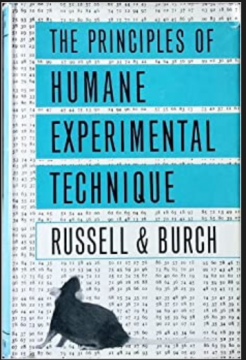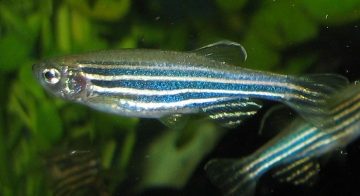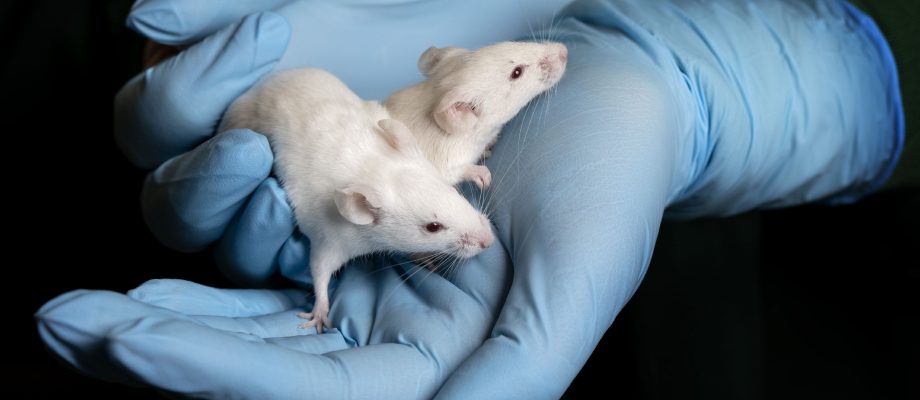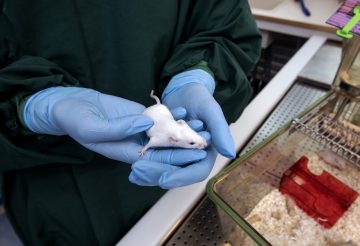CONDITIONS OF RESEARCH. This spring’s 3R seminar arranged by the University of Gothenburg’s Animal welfare body, gathered around 70 online participants, and focused on how scientists kan become better at evaluating the actual severity grading for each animal used in an experiment. During the seminar, Experimental Biomedicine (EBM) also shared different techniques for how they are increasing the welfare of the animals. Among other things, giving pain relief to rats in a pinch of Nutella has turned out to be good, both for a more even pain relief throughout the day, and for avoiding using syringes on the animals.
- Retrospective Assessment – the Actual Severity Grading
- 3R work at EBM: Lifting Techniques and Sweet Doses of Pain Relief
- Developing Cryopreservation of genetic lines in animal research
Retrospective Assessment – the Actual Severity Grading
3R stands for Replace, Reduce, and Refine animal research. Everyone who works with research using animals within the EU is to follow these principles. One important key to help scientists work in accordance with 3R, is to evaluate projects by severity grading for each animal. This is called retrospective assessment.

Ann-Christine Eklöf, PhD and Scientific secretary at the Central Ethical Committee for Animal Research in Sweden (CDFN), gave the participants a closer understanding on why and how evaluation should be made prior to, during, and after each experiment.
”It is important to consider the severity grade already in the planning phase of your project in order to limit steps that may involve pain and suffering for the animals. While the project is ongoing, you need to do a continuous evaluation so that you stay within the frames of the project. Retrospective assessment, on the other hand, is important for future research in order to enhance methods and study design, and take advantage of previous experiences”, Ann-Christine Eklöf said.
Ann-Christine also underlined the importance of retrospective assessment for evaluating the project’s goal achievements, as well as for keeping research transparent and accessible.
Good Examples – But Also Lack of Knowledge
Since 2011, the Central Ethical Committee for Animal Research (CDFN) evaluates approved ethical applications retrospectively. This is done if an experiment is of considerable difficulty, of particular interest, or means experiments with primates.
“We have seen good examples of how researchers improve their design to enhance animal welfare before projects are started. Pilot studies are sometimes used, and some projects have used data simulation or cell cultures instead of live animals”, Ann-Christine said.
Despite the good examples, Ann-Christine noted that there is a lack of knowledge about retrospective assessment among researchers.
“It is part of the education. But there is a gap of several years between applying for the ethical permit and then doing the actual evaluation.”
It is therefore crucial that researcher do the retrospective assessment for each animal. Another problem that Ann-Christine mentions is that pain that animals are exposed to, can be assessed differently by different researchers. A high level of competence as well as good skills in handling animals are required to make a correct assessment.
“Studies have shown that the same situation can be assessed as moderate difficulty by some researchers, but as considerable difficulty by others, which creates a fluidity both up and down the scale. So it is of great importance to be aware of the nuances.”
Facts: Retrospective Assessment and Retrospective Evaluation
- The Central ethical committee (CDFN) does an retrospective evaluation of approved applications. This is done if an experiment is of considerable difficulty, of particular interest, or means experiments with primates.
- Retrospective Assessment is done by the researchers themselves for each animal used in the project, and is reported in the annual statistics. This assessment should be done on all projects, whether or not they are evaluated by CDFN.
- Published evaluations can be found on CDFN’s website www.cdfn.se
3R work at EBM: Lifting Techniques and Sweet Doses of Pain Relief
In collaboration with veterinarians and researchers, the animal technicians at EBM have found new methods to reduce stress and provide more effective pain relief for the animals. Kate Nordqvist, animal technician at EBM and administrator at the University of Gothenburg’s animal welfare body, told us more about this work based on the 3R principles.
 One of the projects involves finding alternative ways for giving pain relief to rats. In consultation with researchers and veterinarians, a mix of pain-relieving buprenorphine and sweet hazelnut cream was given to the rats, rather than injected with a needle.
One of the projects involves finding alternative ways for giving pain relief to rats. In consultation with researchers and veterinarians, a mix of pain-relieving buprenorphine and sweet hazelnut cream was given to the rats, rather than injected with a needle.
“The rats received the mixture in the mouth at first, but has later gotten used to it and are now gladly eating it themselves. Instead of injections several times a day, this Nutella click twice a day is enough. We have found that the pain relief also becomes more efficient since the substance is released in the body more evenly throughout the day,” Kate explained.
A Safer Way to be Lifted
Another ongoing project is that the staff at EBM are trying is find safer and milder ways to lift the mice. Lifting by the tail, a method that studies have shown can cause stress for the animals, is now being replaced by providing support under the body of the mouse.
“Not only animals, but also staff appreciate this method because they get better contact with the mice, and can more easily read their stress signals. We are now working on standardizing the method for how mice should be lifted, so that everyone lifts the same way, and will implement the method in close collaboration with the research groups working at EBM.”
Habituation and Reduced Breeding
Habituating the animals for different situations is also part of the 3R work at EBM. In selected projects, the animals are trained before certain procedures are carried out, for example by being rewarded with candy when samples are taken.
“At EBM, we also work in close collaboration with the research groups to reduce breeding of mice and to avoid excess animals that cannot be used in experiments,” Kate Nordqvist said.
Developing Cryopreservation of genetic lines in animal research

Cryopreservation and IVF technique is being used as a method to secure transgenic fish lines and minimize the number of actively used zebra fish at a lab. The method has now been enhanced and made easier to implement, also at smaller facilities. Preserving genetic lines is normally carried out through breeding, and it often results in an excess use of animals, as well as a risk for genetic drift.
Elisa Alexandersson, who has been working on enhancing cryopreservation together with colleagues in Henrik Zetterberg’s research group, gives us an insight into the results. Elisa’s poster is also available for to view on this page.
![]() Why is Cryopreservation an Efficient Method?
Why is Cryopreservation an Efficient Method?
“It is less time consuming and demands less resources than breeding. In some cases, several years pass before a specific genetic line comes in use, and if the line is kept through breeding there is a risk of genetic drift, meaning that the offspring becomes less and less similar to the original animals. Cryopreservation eliminates this risk, at the same time as fewer animals are kept at the labs.”
![]() How have you enhanced the method?
How have you enhanced the method?
“We based our work on the original cryopreservation method for zebra fish sperm that was developed in 1982. The method has been considered demanding, so our goal was to find a work flow that would be cost-efficient and easy to use also at smaller facilities where there for example is limited storage space.”
![]() What challenges did you meet?
What challenges did you meet?
“To choose the right male zebra fish is crucial for the quality of the sperm. The males should be just the right age and have good physical qualities like bright colors. We have also noticed that the frozen samples are very sensitive to temperature change and must be handled carefully.”
BY: CHARBEL SADER












